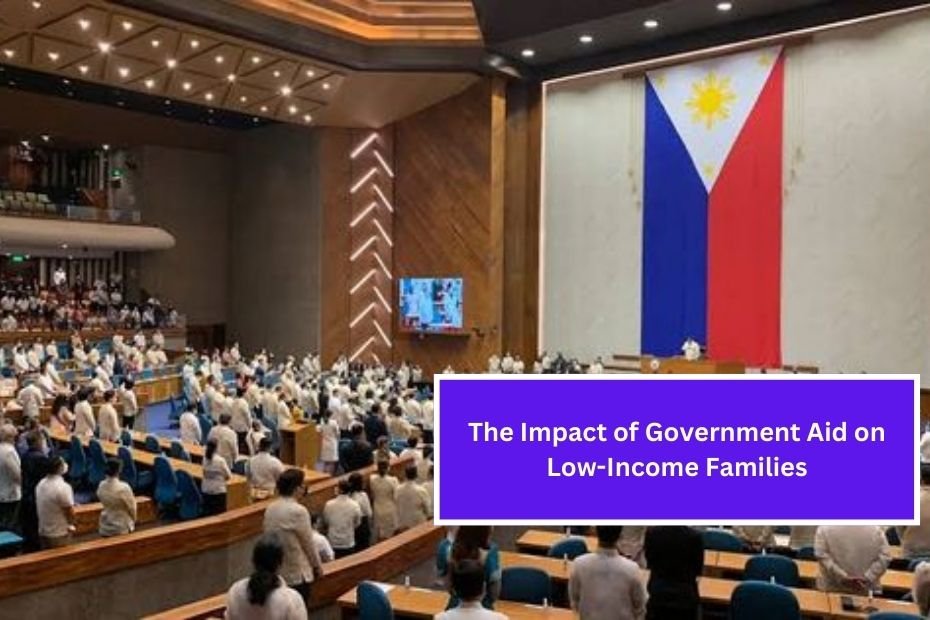Government aid plays a vital role in supporting low-income families. These families often struggle to meet their basic needs, such as food, housing, and healthcare. With the right assistance, they can improve their quality of life, gain financial stability, and achieve a brighter future. This article explores how government aid helps low-income families, the types of assistance available, and its overall impact on their lives.
Understanding Low-Income Families
Low-income families are those who earn less than the median income level in their community. These families may work multiple jobs but still find it hard to make ends meet. Their financial struggles can lead to challenges like inadequate housing, poor nutrition, and limited access to healthcare. The stress of financial instability can also impact mental health and family relationships.
Types of Government Aid
Government aid comes in many forms, designed to help low-income families meet their basic needs. Here are some common types of assistance:
1. Food Assistance Programs
Supplemental Nutrition Assistance Program (SNAP): This program, formerly known as food stamps, provides funds to buy groceries. SNAP helps families afford healthy food, which is crucial for their well-being.
Women, Infants, and Children (WIC): WIC is a nutrition program that supports pregnant women, new mothers, and young children. It provides access to healthy food, nutrition education, and healthcare referrals.
2. Housing Assistance
Housing Choice Voucher Program (Section 8): This program helps families pay for rent in the private market. It provides vouchers that cover a portion of the rent, making housing more affordable.
Public Housing: Some families may qualify for public housing, which offers low-income housing options managed by local housing authorities.
3. Healthcare Assistance
Medicaid: Medicaid provides health coverage for low-income individuals and families. It helps cover medical expenses, including doctor visits, hospital stays, and prescription medications.
Children’s Health Insurance Program (CHIP): CHIP offers health insurance to children in families with incomes too high to qualify for Medicaid but too low to afford private coverage.
4. Cash Assistance
Temporary Assistance for Needy Families (TANF): TANF provides temporary financial help to families with children. It assists with basic needs like food, clothing, and shelter.
General Assistance: Some states offer general assistance programs to provide cash aid to low-income individuals and families.
5. Education and Job Training Programs
Pell Grants: These grants help low-income students pay for college or vocational training. They do not need to be repaid, making education more accessible.
Job Training Programs: Government-funded programs provide training and skill development, helping individuals find stable jobs and increase their income.
The Benefits of Government Aid
Government aid has several positive effects on low-income families, including:
1. Improved Nutrition and Health
Food assistance programs like SNAP and WIC help families access nutritious food. Better nutrition leads to improved health outcomes, reducing the risk of chronic illnesses such as obesity, diabetes, and heart disease.
2. Stable Housing
Housing assistance programs provide families with safe and stable living conditions. Stable housing reduces stress and allows families to focus on work and education. Children in stable homes are more likely to perform well in school.
3. Access to Healthcare
Medicaid and CHIP ensure that low-income families receive necessary medical care. Regular check-ups and preventive services can catch health issues early, leading to better long-term health outcomes.
4. Financial Security
Cash assistance programs offer families financial relief during tough times. This support helps them pay for essential expenses, reducing the likelihood of falling into deeper poverty.
5. Education and Employment Opportunities
Government aid programs that support education and job training help individuals gain skills and knowledge. This can lead to better job opportunities and higher wages, breaking the cycle of poverty.
Challenges and Limitations
While government aid has many benefits, it also faces challenges:
1. Stigma and Misconceptions
Some people view government assistance negatively, believing it encourages dependency. This stigma can discourage families from seeking help, even when they need it.
2. Bureaucracy and Access Issues
Navigating government programs can be complex. Families may face long wait times, complicated application processes, and insufficient information, making it difficult to access the aid they need.
3. Inadequate Support
In some cases, the amount of aid provided may not be enough to cover all basic needs. Rising living costs can make it challenging for families to meet their expenses, even with assistance.
4. Policy Changes
Government policies regarding aid can change, affecting families’ access to support. Cuts in funding or changes in eligibility criteria can leave families without the help they relied on.
Real-Life Examples
To illustrate the impact of government aid, let’s look at a few real-life examples.
Case Study 1: The Ramirez Family
The Ramirez family consists of two parents and three children. They struggled to afford food and rent on their low income. After enrolling in the SNAP program, they received monthly benefits to purchase groceries. This assistance allowed them to buy healthier food, which improved their children’s nutrition and overall health.
Additionally, they received housing assistance through the Section 8 program, which made their rent affordable. This stability gave the parents peace of mind, enabling them to focus on their jobs and their children’s education.
Case Study 2: Maria’s Journey
Maria is a single mother working two part-time jobs. Despite her hard work, she could not afford health insurance. After applying for Medicaid, she received coverage for herself and her son. With access to regular medical care, Maria was able to address her health issues and ensure her son received necessary vaccinations and check-ups.
Maria also enrolled in a job training program funded by the government. After completing the training, she secured a full-time job with better pay and benefits, allowing her to provide a better life for her family.
Conclusion
Government aid plays a crucial role in supporting low-income families, helping them meet their basic needs and improve their quality of life. While challenges exist, the benefits of assistance programs are evident in the lives of many families. By providing access to food, housing, healthcare, and education, government aid empowers individuals to break the cycle of poverty and build a brighter future.
As a society, it’s essential to recognize the importance of these programs and support efforts to make them more accessible and effective. By investing in our communities and ensuring that everyone has the opportunity to thrive, we can create a more equitable and prosperous future for all.

